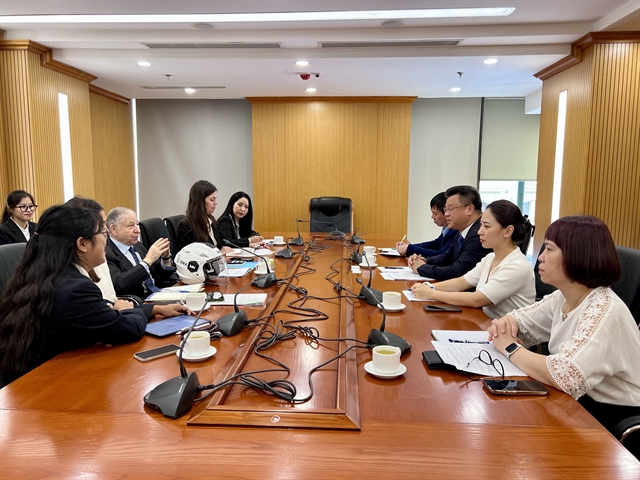 Society
Society

 |
| The meeting between the UN Special Envoy and the National Traffic Safety Commitee. — VNA/VNS Photo |
HÀ NỘI — United Nations Secretary-General's Special Envoy for Road Safety Jean Todt suggested solutions to enhance road safety in Việt Nam during a working session in Hà Nội on April 25 with the National Traffic Safety Committee (NTSC) and relevant agencies.
Todt shared alarming statistics, revealing that road traffic accidents claim around 1.19 million lives and injure about 50 million people worldwide each year. Road crashes remain the leading cause of death among young people aged 15-29, with a staggering 90 per cent of fatalities and injuries occurring in developing countries.
To address this, Todt advocated for comprehensive solutions, including public education, stricter law enforcement, and improvements in vehicle safety standards, protective gear, and road infrastructure. He stressed simple yet life-saving measures such as wearing seat belts, using certified helmets, avoiding mobile phone use while driving, never driving under the influence of alcohol, and ensuring pedestrian-friendly spaces.
Commenting on Việt Nam’s traffic regulations, Todt observed that penalties, primarily fines, remain relatively lenient. Beyond stricter laws, the key lies in changing public behaviour and ingrained driving habits.
NTSC Vice Chairman Lê Kim Thành reported that between 2011 and 2020, Việt Nam reduced road traffic fatalities by over 30 per cent per 100,000 people. In the second Decade of Action for Road Safety (2021–2030), the country is pursuing 12 global targets to cut road deaths and injuries by 5–10 per cent annually, achieving an 8 per cent reduction in 2023–2024.
Thành highlighted 2024’s institutional milestones, including the adoption of the Law on Road Traffic Order and Safety and the Road Law, for a significant decline in accidents, fatalities, and injuries in the first quarter of 2025. Success factors include awareness campaigns, harsher penalties, remote enforcement via traffic cameras, and public disclosure of violators’ information.
Yet, he also outlined key transport challenges. Road transport dominates, handling 90 per cent of passenger traffic and nearly 70 per cent of freight, while railway, maritime, and inland waterway transport still hold a modest market share. Public transport in major cities like Hà Nội and HCM City meets only 15 per cent of demand, and high motorcycle and private vehicle ownership pose ongoing issues.
UN and World Health Organisation representatives reaffirmed their support for Việt Nam’s road safety efforts, focusing on child safety, accident reduction, and promoting green growth and digital transformation in transport. — VNS